What is Abrasion Resistance?
Abrasion resistance refers to the ability of a material to withstand wearing away or erosion caused by friction. This property is important in many industries, including manufacturing, construction, and clothing, where materials are subjected to constant rubbing, scraping, or other forms of mechanical wear. A material with high abrasion resistance is able to maintain its original appearance and functionality for a longer period of time when exposed to abrasive forces.
Factors Affecting Abrasion Resistance
There are several factors that can affect the abrasion resistance of a material, including:
- Material Hardness: Harder materials tend to have higher abrasion resistance because they are less likely to deform or wear down when in contact with abrasive surfaces.
- Surface Finish: A smooth surface finish can reduce the amount of friction and abrasion experienced by a material, leading to improved abrasion resistance.
- Material Composition: The chemical composition of a material can impact its abrasion resistance. For example, adding certain fillers or reinforcements to a polymer can enhance its resistance to abrasion.
- Environmental Factors: The presence of moisture, heat, or chemicals in the environment can affect the abrasion resistance of a material.
Testing Abrasion Resistance
There are various standardized tests used to measure the abrasion resistance of materials, such as the Taber Abrasion Test, the ASTM D4060 Standard Test Method for Abrasion Resistance of Organic Coatings, and the Martindale Abrasion and Pilling Tester for textiles. These tests provide quantitative data on the material's resistance to abrasion, allowing for comparison between different materials and formulations.
Study Guide
When studying abrasion resistance, it's important to familiarize yourself with the following concepts:
- Define abrasion resistance and explain its significance in various industries.
- Describe the factors that can influence the abrasion resistance of a material.
- Understand the methods and standards used for testing abrasion resistance.
- Compare the abrasion resistance of different materials and explain the implications for real-world applications.
- Analyze how changes in material composition or environmental conditions can impact abrasion resistance.
Additionally, it can be helpful to review case studies or examples of materials with high abrasion resistance and their practical uses in industry. Understanding the practical implications of abrasion resistance can provide context for the theoretical concepts covered in your studies.
Finally, practice interpreting and analyzing data from abrasion resistance tests to gain a deeper understanding of how material properties influence wear resistance.
.◂Earth Science Worksheets and Study Guides High School. Rocks I
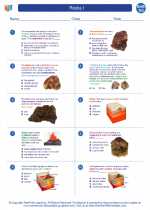
 Worksheet/Answer key
Worksheet/Answer key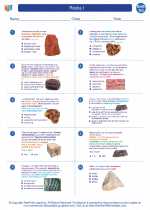
 Worksheet/Answer key
Worksheet/Answer key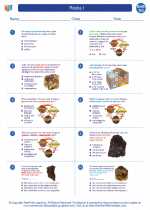
 Vocabulary/Answer key
Vocabulary/Answer key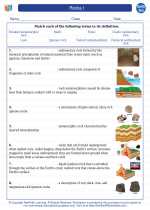
 Vocabulary/Answer key
Vocabulary/Answer key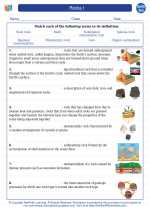
 Vocabulary/Answer key
Vocabulary/Answer key
